I have already discussed here and here the ten Coptic fragments auctioned in July 2009 at Sotheby’s in London. They are all datable to the 10th century and belonged once to the library of the White Monastery, situated in Upper Egypt, near the ancient Panopolis.
The fragments have been purchased from Sotheby’s by Bolaffi in Turin, and in the meanwhile the new owners have supplied me with high-quality photos of the entire lot. I am indebted to them for their generosity.
As I said in my previous posts, the “Sotheby’s fragments” prove to be quite valuable. They preserve parts of the following works:
Cyril of Alexandria, Scholia on the Incarnation of Monogenes (CPG 5225).
ps.-Cyril of Jerusalem, On the Passion of Christ, homily 1 (CPG 3598; clavis coptica 0114).
ps.-Cyril of Jerusalem, On the Finding of the True Cross (CPG 3602; clavis coptica 0120).
ps.-Evodius of Rome, On the Passion of Christ (clavis coptica 0149).
It is noteworthy that all except Cyril of Alexandria’s Scholia incorporate apocryphal legends.
THE NEWLY IDENTIFIED FRAGMENT
There was among the fragments one scrap of parchment which contains such a small amount of text that, at first glance, I could not make very much sense out of it. However, when such cases occur, the paleographical comparison with other fragments from the White Monastery can be rewarding.
Indeed, the paleographical examination has revealed that this scrap originally belonged to a codex leaf which can be reconstructed out of three supplementary fragments. Two of these are kept today in the Bibliothèque Nationale in Paris (shelf marks 12918, f. 158 and 1315, f. 150), while a third one is in Österreichische Nationalbibliothek in Vienna (inventory number K 9371). I prepared a couple of montages of the four fragments using Adobe Photoshop (the Sotheby’s fragment is the colored one):
 This is quite a nice puzzle. As the three other fragments have already been published, it is possible to infer on their basis the identity of the Sotheby’s fragment which previously escaped identification.
This is quite a nice puzzle. As the three other fragments have already been published, it is possible to infer on their basis the identity of the Sotheby’s fragment which previously escaped identification.
WHAT TEXT IS THIS?
These fragments contain an interesting apocryphal text which recounts the last days of Jesus’ life. It mentions in particular the episode of the resurrection of Lazarus, in which the author has inserted a long apocryphal dialogue between Christ and the apostle Thomas.
Large portions of this New Testament apocryphon were published a long time ago by Eugène Revillout under the fallacious title “Gospel of the Twelve Apostles” (in Patrologia Orientalis 2/2, 131-184). Another French editor, Pierre Lacau, called it simply “Apocryphal Gospel” (Fragments d’apocryphes coptes [Paris 1904] 79-108). The text was included as well in some more recent collections of Christian apocrypha: it appears in L. Moraldi, Apocrifi del Nuovo Testamento vol. 1 (Turin 1971) 391-405, and in M. Erbetta, Gli Apocrifi del Nuovo Testamento vol. 1/2 (Turin 1981) 320-326. There is also a French translation made by Françoise Morard in P. Geoltrain et Jean-Daniel Kaestli (eds.), Écrits apocryphes chrétiens (Paris 2005). Those who are reading English can use Forbes Robinson’s translation in Coptic Apocryphal Gospels (Cambridge 1896) 168-179. However, Enzo Lucchesi raised serious doubts concerning the gospel-like style of the document and suggested that it is rather a homily with apocryphal insertions (cf. his “Un évangile apocryphe imaginaire,” Orientalia lovaniensia periodica 28 [1997] 167-178).
The text is preserved in several fragmentary codices, but unfortunately the title has not survived in any of them. However, both Tito Orlandi and Enzo Lucchesi have provided good arguments that it was attributed to an imaginary author, Evodius of Rome.
WHO WAS EVODIUS?
According to some Christian writers, Evodius was a disciple of the apostle Peter and his immediate successor on the episcopal see of Antioch. It is interesting, however, that in the Coptic tradition Evodius is said to be the bishop of Rome. He is portrayed as an eye-witness of the apostolic times and keeper of certain words of the Savior and of his disciples which are not recorded otherwise. Several homilies survived in Coptic under Evodius’ name: a Dormition of the Virgin, a homily on the Passion of Christ, and, very likely, the apocryphal text to which the Sotheby’s fragment is a new witness.










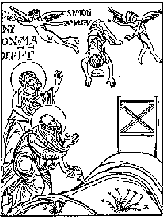




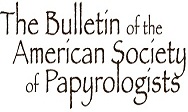
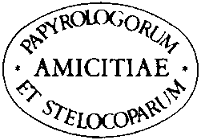
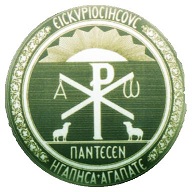





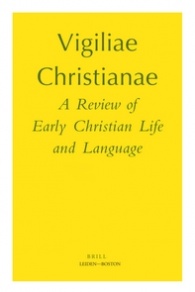






Pingback: A Coptic fragment of the Gospel of the Twelve at Sothebys at Roger Pearse
Pingback: [ad hoc] Christianity , Archive » Episode #16: Blogosphere roundup, April 20, 2011
Pingback: Coptic Fragments from Cyril of Alexandria’s Scholia on the Incarnation of Monogenes | Alin Suciu
Pingback: Why Jesus was a Giant: The Messianic Interpretation of Psalm 18(19) in Gosp. Peter 10.38-42 | Remnant of Giants
Pingback: Coptic Fragments on the Dormition of the Virgin | Alin Suciu
Pingback: A Further Fragment from the Apocryphal Acts of John in Coptic: Once Again Concerning the Sotheby-Bolaffi Fragments | Alin Suciu
Pingback: A Leiden Manuscript Containing the Apocryphal Names of the Two Thieves | Alin Suciu
Pingback: Two Joint Fragments from the Proverbs of Solomon in Coptic and the Extinction of the White Monastery Library | Alin Suciu
Pingback: On the Identity of Al-Injil